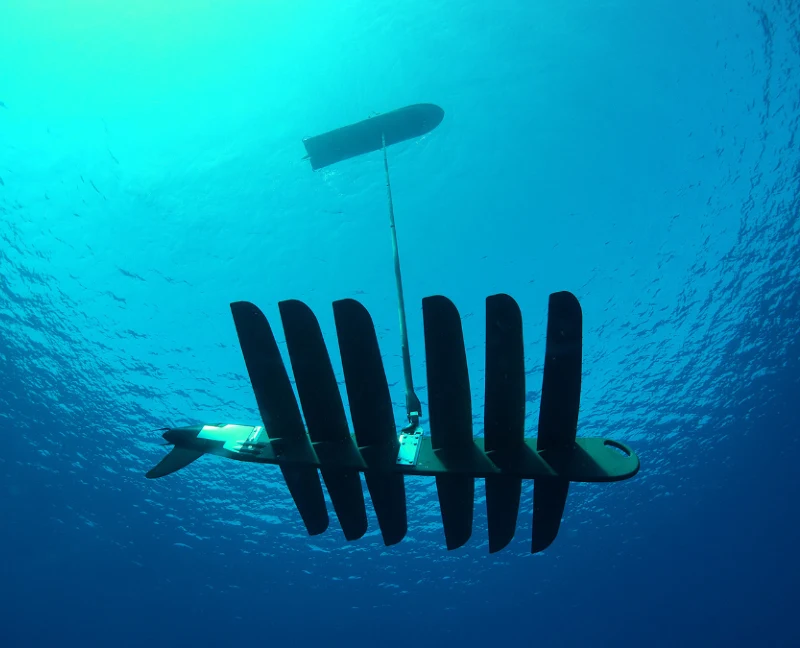In an era where environmental sustainability is paramount, scientists at Cranfield University in the UK have taken a significant leap forward. They are developing a groundbreaking underwater wing technology for ships, inspired by the majestic whale. This ‘wave devouring’ propulsion system not only promises to reduce emissions significantly, but also enhances the smoothness of maritime travel.
Whale-Tail Inspiration
The essence of this innovative technology lies in its simplicity and biomimicry – drawing inspiration from the natural world, specifically the tail fin of a whale. The system involves a flapping foil installed at the bottom of a ship’s hull, which harnesses the kinetic energy of waves for propulsion. This process mimics the movement of a whale’s tail fin through the water and generates thrust without relying on fuel.
Harnessing Kinetic Energy
As the ship moves, the underwater wing flows through the water and automatically flaps up and down, much like how a bird glides through the air or a fish swims. This action creates thrust, propelling the ship forward. Initial movement requires an engine, but once cruising, the foils significantly reduce the effort needed to maintain speed.
Lab-scale tests at Cranfield’s ocean laboratory indicate that this wave-devouring system could slash fuel usage by up to 15%. While this might seem modest, it represents a substantial step towards decarbonizing a sector that produces more emissions than air travel. When combined with other emerging technologies like windwings or solar sails, this innovation could play a pivotal role in steering the global shipping industry towards net-zero emissions.
The concept of using flapping foils for propulsion is over a century old, discovered by German researchers. However, only recently has the technology been understood and developed to a practical and scalable level, driven by the urgent need to reduce fuel consumption.

Commercialization and Market Potential
Companies like Norway’s Wavefoil and the U.S.-based Liquid Robotics are leading the charge in commercializing this technology. Wavefoil made history in 2019 by installing retractable bow foils on a ship – a first of its kind. These foils, which can be retracted during storms or docking, have already been installed on several vessels.
Below is a short (23 seconds) explainer video of the Wavefoil in action.
On the other hand, Liquid Robotics, acquired by Boeing in 2016 and currently worth around $200 million, focuses on autonomous surface vehicles like Waveglider, equipped with solar panels and a wave propulsion system for research and defense applications.
The potential applications of wave-devouring technology extend far beyond just fuel savings. They promise increased comfort in rough seas and could be adapted for various maritime applications – from waste-collecting robots to massive cargo ships.
More To Discover
Dr. Liang Yang, the lead researcher at Cranfield, envisions this technology becoming a standard feature across the maritime industry for ships of all sizes.
With the maritime industry seeking sustainable solutions, wave-devouring technology emerges as a promising contender. Its ability to harness natural forces efficiently, reduce emissions, and enhance comfort makes it an attractive option for the future of green shipping. As more vessels adopt this technology, we edge closer to a cleaner, more sustainable maritime future.



















